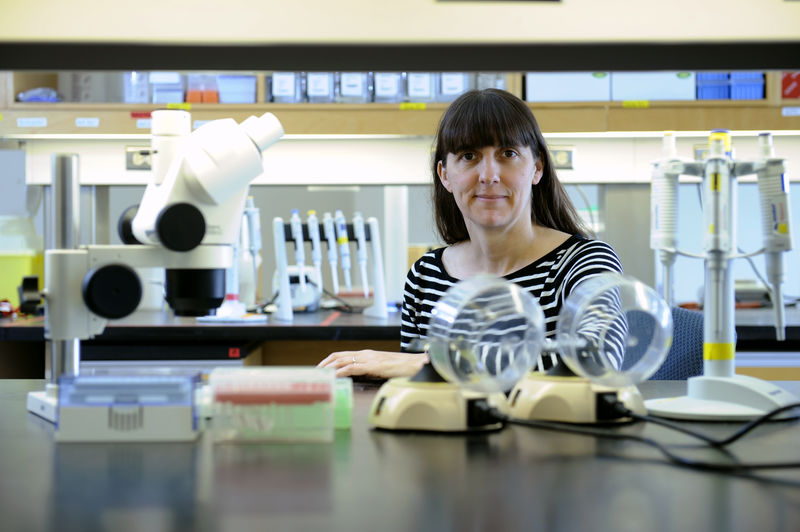Nadia Aubin-Horth, Département de biologie

Aubin-Horth Laboratory
The projects in our Integrative biology of behavior Laboratory can be classified under two main themes.
1-Mechanisms of behaviour variation.
Our goal is to understand the molecular and hormonal underpinnings of behavior. We study behaviour differences that result from developmental plasticity and genotype variation in fish. Our main model is the threespine stickleback, and we also work with African cichlids and poecilids depending on our question. Several lab members aim to uncover the molecular and proteomic mechanisms underlying the modification of stickleback behaviour by its endoparasite, the cestode Schistocephalus solidus. We are interested to study both the fish host and its parasite at the molecular, cellular and hormonal level, as well as how they interact. We also study natural variation in ecologically-relevant behaviours such as boldness, exploration and activity, as well as social behaviours including sociability, aggressiveness and social competence, across individuals, populations and species. We also study if and how the environment (maternal or early post hatch) reprograms offspring behaviour and learning in fish. In all these projects, we study the physiological regulatory networks implicated using genome-wide approaches or focusing on specific networks involved in the stress response and social behaviour (glucocorticoid, adrenergic, serotonergic and dopaminergic axes) as well as behaviourally-relevant nonapeptides (vasopressin and oxytocin fish homologues). We connect data from the same individual: behaviour and morphology, levels of candidate neuropeptides and their receptors (RT-qPCR, in situ hybridization, HPLC) and their turnover, genome-wide expression levels (microarrays, RNA-seq), DNA modifications such as methylation (bisulfite treatment + sequencing), physiology and hormones (EIA, HPLC).
2-Aquatic ecotoxicology.
Our interest in the neuroendocrinological basis of behaviour variation led us to study the effects of aquatic pollutants such as personal care products and pharmaceuticals. We are currently assessing the capacity of an Engineering Land Application & EnVapoCrystallization System (ELAPS>EVC by Northern Watertek) to treat waste water, especially regarding removal of personal care products and pharmaceuticals from aquatic systems. We study the effects of chronic exposure to water containing these aquatic pollutants before and after ELAPS treatment on fish behaviour and reproduction in the fathead minnow, as well as Daphnia survival and reproduction.